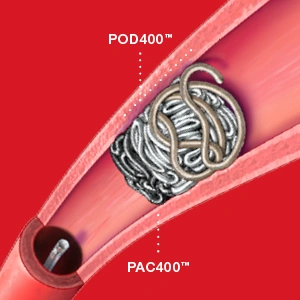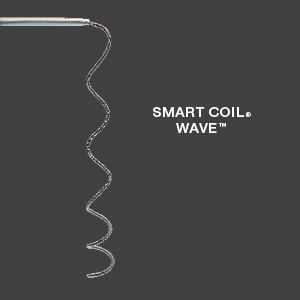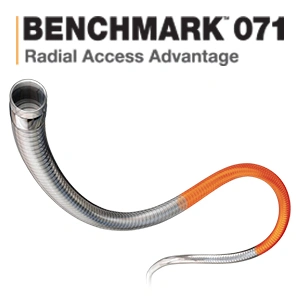Meetings & Events: Penumbra Announces Key Events at SVIN 2019

Penumbra Announces Key Events at Society of Vascular and Interventional Neurology 2019 Annual Meeting
Penumbra, Inc. is pleased to announce key events at the 12th Society of Vascular and Interventional Neurology Annual Meeting to be held November 20-23 at the Hilton in Atlanta, GA.
Attendees are invited to learn more about Penumbra System®, Penumbra JET™ 7 with XTRA FLEX technology, Penumbra ENGINE™, POD400™, PAC400™, Penumbra SMART COIL®, and BENCHMARK™ 071 devices by visiting Penumbra Booth 13 in the Galleria Exhibit Hall. Penumbra will exhibit from 12:00 to 5:00 p.m. on Wednesday, November 20; 6:45 a.m. to 4:15 p.m. on Thursday, November 21; 6:45 a.m. to 4:15 p.m. on Friday, November 22; and 6:45 a.m. to 11:15 a.m. on Saturday, November 23.
Penumbra’s neuro products for thrombectomy and embolization will also be highlighted during the following events:
Platform Session II
Friday, November 22 from 11:41 to 11:48 a.m.
Salon Ballroom
- Mechanical Thrombectomy with Penumbra 3D Revascularization Device™ for Acute Stroke: Interim Analysis of COMPLETE Registry
Dr. Johanna Fifi, Icahn School of Medicine at Mount Sinai, New York, NY
Industry Lunch Symposium with Penumbra
Friday, November 22, 12:15 to 12:22 p.m.
Salon Ballroom
- LVO and Beyond with Large Bore Catheters
Dr. Nabeel A. Herial, Thomas Jefferson University Hospital, PA
- Treatment of Acute Intercranial Aneurysms with Next Generation Coil Technology
Dr. Ashish Nanda, SSM St. Clare Hospital, MO
Poster Presentations
3:30 to 4:00 p.m.
Galleria Exhibit Hall
Thursday, November 21
- Multicenter Experience of ADAPT with a New Generation Large Bore Catheter (JET 7) for Acute Stroke Thrombectomy: A COMPLETE Registry Subset
Dr. Ameer Hassan, University of Texas Rio Grande Valley, Valley Baptist Medical Center, Harlingen, TX
Friday, November 22
- Safety and Efficacy of the Penumbra System for Large Vessel Occlusions in the Posterior Circulation
Dr. Johanna Fifi, Icahn School of Medicine at Mount Sinai, New York, NY
About Penumbra’s Neuro Products
Penumbra has a growing suite of thrombectomy and embolization products for use in a range of
neurovascular conditions:
The Penumbra System is a fully integrated system designed specifically for mechanical thrombectomy by aspiration that first received 510(k) clearance by the U.S. Food & Drug Administration in December 2007.
The Penumbra System enables physicians to use aspiration, which acts like a minimally invasive “vacuum” inside the artery to remove stroke causing blood clots from the brain safely and effectively. It is intended for use in the revascularization of patients with acute ischemic stroke secondary to intracranial large vessel occlusion. The latest generation of the Penumbra System features the Penumbra JET 7 with XTRA FLEX technology and Penumbra JET D Reperfusion Catheters, the 3D Revascularization Device, and Penumbra ENGINE and accessories. The Penumbra JET 7 Reperfusion Catheter with XTRA FLEX technology powered by the Penumbra ENGINE offers the highest thrombus removal force for revascularization of acute ischemic stroke patients with large vessel occlusions.a Thrombus removal is calculated based on catheter tip size and vacuum level of the aspiration source.
a. Data on file at Penumbra, Inc.

Penumbra’s embolization platform includes POD400, PAC400, and PC400™, large volume specialty coils designed specifically for fistulas, vessel sacrifices, and large and giant aneurysms.

The Penumbra SMART COIL System is comprised of COMPLEX and WAVE™ coils designed for framing, filling, and finishing. These coils have varying levels of softness which are designed to make the most complex cases much simpler. All coils within the Penumbra SMART COIL System feature an Ultra HD Fiber designed to provide stretch resistance, added durability, and flexibility at the coil/pusher interface. Penumbra SMART COIL also features an instant single-click mechanical detachment system for ease of use and reliability. The Penumbra SMART COIL System is used to treat a wide-range of neurovascular lesions, including small, medium, and large-sized aneurysms.

The BENCHMARK 071 Intracranial Access Catheter combines Penumbra’s innovative tracking technology with its original Neuron™ intracranial access concept. The result is a next-generation 6 F guide catheter built for delivery of today’s most complex therapies.
Risk Information
Caution: Federal (USA) law restricts these devices to sale by or on the order of a physician. Prior to use,
please refer to the Instructions for Use for complete product indications, contraindications, warnings,
precautions, potential adverse events, and detailed instructions for use.
PENUMBRA SYSTEM — Indication for Use
Penumbra Reperfusion Catheters and Separators
As part of the PENUMBRA SYSTEM, the Reperfusion Catheters and Separators are indicated for use in the revascularization of patients with acute ischemic stroke secondary to intracranial large vessel occlusive disease (within the internal carotid, middle cerebral — M1 and M2 segments, basilar, and vertebral arteries) within 8 hours of symptom onset. Patients who are ineligible for intravenous tissue plasminogen activator (IV t-PA) or who fail IV t-PA therapy are candidates for treatment.
Penumbra 3D REVASCULARIZATION DEVICE
As part of the PENUMBRA SYSTEM, the Penumbra 3D REVASCULARIZATION DEVICE is indicated for use in the revascularization of patients with acute ischemic stroke secondary to intracranial large vessel occlusive disease (within the internal carotid, middle cerebral — M1 and M2 segments) within 8 hours of symptom onset. Patients who are ineligible for intravenous tissue plasminogen activator (IV t-PA) or who fail IV t-PA therapy are candidates for treatment.
Penumbra Aspiration Tubing
As part of the PENUMBRA SYSTEM, the Penumbra Sterile Aspiration Tubing is indicated to connect the Penumbra Reperfusion Catheters to the Penumbra Aspiration Pump.
Penumbra Aspiration Pump
The Penumbra Aspiration Pump is indicated as a vacuum source for Penumbra Aspiration Systems.
Contraindications
There are no known contraindications.
Warnings
• The device is intended for single use only. Do not resterilize or reuse. Resterilization and/or Reuse may result in ineffective catheter coating lubrication, which may result in high friction and the inability to access the target neuro vasculature location.
• Do not use kinked or damaged devices. Do not use open or damaged packages. Return all damaged devices and packaging to the manufacturer/distributor.
• Do not use automated high-pressure contrast injection equipment with the Penumbra Reperfusion Catheter because it may damage the device.
• Confirm vessel diameter, and select an appropriate size Penumbra Reperfusion Catheter. Do not use in arteries with diameters smaller or equal to the distal outer diameter of the Penumbra Reperfusion Catheters. Refer to the Reperfusion Catheter labeling for dimensional information.
• Do not advance, retract or use any component of the PENUMBRA SYSTEM against resistance without careful assessment of the cause using fluoroscopy. If the cause cannot be determined, withdraw the device or system as a unit. Unrestrained torquing or forced insertion of the catheter, revascularization device, or SEPARATOR against resistance may result in damage to the device or vessel.
• Do not use the PENUMBRA SYSTEM with a pump other than the Penumbra Aspiration Pump.
• The Penumbra 3D REVASCULARIZATION DEVICE has not been evaluated in patients with angiographic evidence of pre-existing arterial injury.
Precautions
• The PENUMBRA SYSTEM should only be used by physicians who have received appropriate training in interventional neuro-endovascular techniques and treatment of acute ischemic stroke.
• Use prior to the “Use By” date.
• Use the PENUMBRA SYSTEM in conjunction with fluoroscopic visualization.
• As in all fluoroscopy procedures, consider all necessary precautions to limit patient radiation exposure by using sufficient shielding, reducing fluoroscopy times and modifying radiation technical factors whenever possible.
• Maintain a constant infusion of appropriate flush solution.
• When performing aspiration, ensure that the Penumbra Aspiration Tubing valve is open for only the minimum time needed to remove thrombus. Excessive aspiration or failure to close the Penumbra Aspiration Tubing valve when aspiration is complete is not recommended.
• The Penumbra SEPARATOR is not intended for use as a neurovascular guidewire. If repositioning of the Penumbra Reperfusion Catheter is necessary during the revascularization procedure, such repositioning should be performed over an appropriate neurovascular guidewire using standard microcatheter and guidewire techniques.
• Administration of anticoagulants and antiplatelets should be suspended until 24 hours post-treatment. Medical management and acute post stroke care should follow the ASA guidelines.1 Any neurological deterioration should be evaluated by urgent CT scan and other evaluations as indicated according to investigator/hospital best practice.
• As in all surgical interventions, monitoring of intra-procedural blood loss is recommended so that appropriate management may be instituted.
Potential Adverse Events
Possible complications include, but are not limited to, the following: allergic reaction and anaphylaxis from contrast media; acute occlusion; air embolism; arteriovenous fistula; death; device malfunction; distal embolization; emboli; false aneurysm formation; hematoma or hemorrhage at access site; inability to completely remove thrombus; infection; intracranial hemorrhage; ischemia; kidney damage from contrast media; neurological deficits including stroke; vessel spasm, thrombosis, dissection, or perforation; radiation exposure that may lead to cataracts, skin reddening, burns, alopecia, or neoplasia from x-ray exposure.
1. Adams, et al., Guidelines for the Early Management of Adults with Ischemic Stroke: A Guideline from the AHA/ASA Stroke Council, Clinical Cardiology Council, Cardiovascular Radiology and Intervention Council, and the Atherosclerotic Peripheral Vascular Disease and Quality of Care Outcomes in Research Interdisciplinary Working Groups: The American Academy of Neurology affirms the value of this guideline as an educational tool for neurologists, Stroke May 2007; 38:1655-1711.
PENUMBRA ENGINE — Indication for Use
The PENUMBRA ENGINE is indicated as a vacuum source for the Penumbra Aspiration Systems.
Contraindications
There are no contraindications.
Warnings/Precautions
• The canister is intended for single use only. Do not reuse. Reuse may result in canister cracking or vacuum filter blockages, which may result in the inability to aspirate.
• Do not block bottom or back air vents. Unit may overheat and shut off or fail to restart if run for extended periods without airflow.
• To avoid risk of electrical shock, this equipment must only be connected to a supply mains with protective earth.
• Do not position the PENUMBRA ENGINE so that it is difficult to remove the power cord. The means of mains disconnect is to remove the power cord.
• Only use replacement fuse with correct rating (see Table 1 for fuse rating).
• Remove and service the PENUMBRA ENGINE if liquids or solids have been drawn into the PENUMBRA ENGINE.
• Do not use in the presence of a flammable anesthetic mixture with air or nitrous oxide.
• Do not use in an oxygen rich environment.
• To prevent fire or shock hazard, use a replacement power cord of equal rating.
• Do not re-infuse blood or fluid from the canister back into the patient.
• Do not use petroleum base compounds, acids, caustics, or chlorinated solvents to clean or lubricate any parts. It will reduce service life of the PENUMBRA ENGINE. Use only water-based solvents for cleaning.
• Use of this equipment adjacent to or stacked with other equipment should be avoided because it could result in improper operation. If such use is necessary, this equipment and the other equipment should be observed to verify that they are operating normally.
• Portable RF communications equipment (including peripherals such as antenna cables and external antennas) should be used no closer than 30 cm (12 inches) to any part of the PENUMBRA ENGINE. Otherwise, this could result in degradation of the performance of this equipment.
• Common emitters (such as RFID emitters, security systems, diathermy equipment, and portable transmitters) should not be used in close proximity to the PENUMBRA ENGINE as they can interfere with and result in degradation of the performance of the equipment.
• Equipment is not safe for MR use.
• No modification of this equipment is allowed.
POD System — Indication for Use
For POD Coils with nominal sizes ≤ 6 mm
The POD System is indicated for the embolization of:
• Intracranial aneurysms.
• Other neurovascular abnormalities such as arteriovenous malformations and arteriovenous fistulae.
• Arterial and venous embolizations in the peripheral vasculature.
Contraindications
There are no known contraindications.
Warnings
The POD System should only be used by physicians who have received appropriate training in interventional techniques.
Precautions
• The device is intended for single use only. Do not resterilize or reuse. Resterilization and/or reuse may compromise the structural integrity of the device or increase the risk of contamination or infection leading to device failure and/or cross-infection and potential patient injury, illness, or death.
• Do not use kinked or damaged devices. Do not use opened or damaged packages. Return all damaged devices and packaging to the manufacturer/distributor.
• Use prior to the “Use By” date.
• Use device in conjunction with fluoroscopic guidance.
• Do not advance or retract the device against resistance without careful assessment of the cause using fluoroscopy. If POD cannot be advanced or retracted, withdraw the device as a unit with the microcatheter.
• Moving or torquing the device against resistance may result in damage to the vessel or device.
• Maintain a constant infusion of an appropriate flush solution.
Potential Adverse Events
Possible complications include, but are not limited to, the following:
acute occlusion; air embolism; allergic reaction and anaphylaxis from contrast media; aneurysm rupture; arteriovenous fistula; coagulopathy; coil herniation into parent vessel; death; device malfunction; distal embolization; emboli; embolic stroke and other cerebral ischemic events; false aneurysm formation; hematoma or hemorrhage at access site of entry; incomplete aneurysm occlusion; infection; intima dissection; intracranial hemorrhage; ischemia; myocardial infarction; neurological deficits including stroke; parent artery occlusion; peripheral thromboembolic events; post-embolization syndrome; premature device detachment; recanalization; renal failure; respiratory failure; revascularization; thromboembolic episodes; vessel spasm, thrombosis, dissection, or perforation.
Penumbra Coil — Indication for Use
The Penumbra Coil System is indicated for the embolization of:
• Intracranial aneurysms.
• Other neurovascular abnormalities such as arteriovenous malformations and arteriovenous fistulae.
• Arterial and venous embolizations in the peripheral vasculature.
Contraindications
There are no known contraindications.
Warnings
The Penumbra Coil System should only be used by physicians who have received appropriate training in neuro-interventional techniques.
Precautions
• The device is intended for single use only. Do not resterilize or reuse. Resterilization and/or reuse may compromise the structural integrity of the device or increase the risk of contamination or infection leading to device failure and/or cross-infection and potential patient injury, illness, or death.
• Do not use kinked or damaged devices. Do not use opened or damaged packages. Return all damaged devices and packaging to the manufacturer/distributor.
• Use prior to the “Use By” date.
• Use device in conjunction with fluoroscopic guidance.
• Do not advance or retract the device against resistance without careful assessment of the cause using fluoroscopy.
• Moving or torquing the device against resistance may result in damage to the vessel or device.
• Maintain a constant infusion of an appropriate flush solution.
Potential Adverse Events
Possible complications include, but are not limited to, the following:
acute occlusion; air embolism; allergic reaction and anaphylaxis from contrast media; aneurysm rupture; arteriovenous fistula; coagulopathy; coil herniation into parent vessel; death; device malfunction; distal embolization; emboli; embolic stroke and other cerebral ischemic events; false aneurysm formation; hematoma or hemorrhage at access site of entry; incomplete aneurysm occlusion; infection; intima dissection; intracranial hemorrhage; ischemia; myocardial infarction; neurological deficits including stroke; parent artery occlusion; peripheral thromboembolic events; post-embolization syndrome; premature device detachment; recanalization; renal failure; respiratory failure; revascularization; thromboembolic episodes; vessel spasm, thrombosis, dissection, or perforation.
PENUMBRA SMART COIL — Indication for Use
The PENUMBRA SMART COIL System is indicated for the embolization of:
• Intracranial aneurysms.
• Other neurovascular abnormalities such as arteriovenous malformations and arteriovenous fistulae.
• Arterial and venous embolizations in the peripheral vasculature.
Contraindications
There are no known contraindications.
Warnings
The PENUMBRA SMART COIL System should only be used by physicians who have received appropriate training in interventional techniques.
Precautions
• The device is intended for single use only. Do not resterilize or reuse. Resterilization and/or reuse may compromise the structural integrity of the device or increase the risk of contamination or infection leading to device failure and/or cross-infection and potential patient injury, illness, or death.
• Do not use kinked or damaged devices. Do not use opened or damaged packages. Return all damaged devices and packaging to the manufacturer/distributor.
• Standard and Soft configurations of Smart Coils are designed with Nitinol wire inside the platinum outer coil. The safety and effectiveness of this device has not been evaluated in patients with Nitinol allergy.
• Use prior to “Use By” date.
• Do not advance or withdraw the device against resistance without careful assessment of the cause using fluoroscopy.
• Moving or torquing the device against resistance may result in damage to the vessel or device.
• Maintain a constant infusion of an appropriate flush solution.
Potential Adverse Events
Potential complications include but are not limited to:
acute occlusion; air embolism; allergic reaction and anaphylaxis from contrast media; aneurysm rupture; arteriovenous fistula; coagulopathy; coil herniation into parent vessel; death; device malfunction; distal embolization; emboli; embolic stroke and other cerebral ischemic events; false aneurysm formation; hematoma or hemorrhage at access site of entry; incomplete aneurysm occlusion; infection; intima dissection; intracranial hemorrhage; ischemia; myocardial infarction; neurological deficits including stroke; parent artery occlusion; peripheral thromboembolic events; post-embolization syndrome; premature device detachment; recanalization; renal failure; respiratory failure; revascularization; thromboembolic episodes; vessel spasm, thrombosis, dissection or perforation.
BENCHMARK Intracranial Access System — Indication for Use
The BENCHMARK Intracranial Access System is indicated for the introduction of interventional devices into the peripheral, coronary, and neuro vasculature.
Contraindications
There are no known contraindications.
Warnings
The BENCHMARK Intracranial Access System should only be used by physicians who have received appropriate training in interventional techniques.
Precautions
• The device is intended for single use only. Do not resterilize or reuse. Resterilization and/or reuse may result in ineffective catheter coating lubrication, which may result in high friction and the inability to access the target vasculature location; and/or may compromise the structural integrity of the device.
• Do not use kinked or damaged devices. Do not use open or damaged packages. Return all damaged devices and packaging to the manufacturer/distributor.
• Use prior to “Use By” date.
• Use the BENCHMARK Intracranial Access System in conjunction with fluoroscopic visualization.
• Do not advance or withdraw the BENCHMARK Intracranial Access System against resistance without careful assessment of the cause using fluoroscopy. If the cause cannot be determined, withdraw the device. Unrestrained moving or torquing the device against resistance may result in damage to the vessel or device.
• Maintain a constant infusion of an appropriate flush solution.
• If flow through the device becomes restricted, do not attempt to clear the lumen by infusion. Remove and replace the device.
Potential Adverse Events
Possible complications include, but are not limited to, the following:
acute occlusion; air embolism; death; distal embolization; emboli; false aneurysm formation; hematoma or hemorrhage at puncture site; infection; intracranial hemorrhage; ischemia; neurological deficits including stroke; vessel spasm, thrombosis, dissection, or perforation.
NEURON Intracranial Access System — Indication for Use
The NEURON Intracranial Access System is indicated for the introduction of interventional devices into the peripheral, coronary, and neuro vasculature.
Contraindications
There are no known contraindications.
Warnings
The NEURON Intracranial Access System should only be used by physicians who have received appropriate training in interventional techniques.
Precautions
• The device is intended for single use only. Do not resterilize or reuse. Resterilization and/or reuse may result in ineffective catheter coating lubrication, which may result in high friction and the inability to access the target vasculature location; and/or may compromise the structural integrity of the device.
• Do not use kinked or damaged devices. Do not use open or damaged packages. Return all damaged devices and packaging to the manufacturer/distributor.
• Use prior to the “Use By” date.
• Use the NEURON Intracranial Access System in conjunction with fluoroscopic visualization.
• Do not advance or withdraw the NEURON Intracranial Access System against resistance without careful assessment of the cause using fluoroscopy. If the cause cannot be determined, withdraw the device. Unrestrained moving or torquing the device against resistance may result in damage to the vessel or device.
• Maintain a constant infusion of an appropriate flush solution.
• If flow through the device becomes restricted, do not attempt to clear the lumen by infusion. Remove and replace the device.
Potential Adverse Events
Possible complications include, but are not limited to, the following:
acute occlusion; air embolism; death; distal embolization; emboli; false aneurysm formation; hematoma or hemorrhage at puncture site; infection; intracranial hemorrhage; ischemia; neurological deficits including thrombosis, dissection, or perforation.
Related Articles
-
Employee Spotlight: Pascual Reginio
June 26, 2025 -
Penumbra’s Newly Expanded swiftPAC™ Coil Line Poised to Help Physicians Meet Growing Demand for Neurosurgical Conditions
June 20, 2025 -
New THRIVE Data Demonstrates Penumbra’s CAVT™ Technology Is Associated with Reduced Related Readmissions and Complication Rates When Managing ALI
June 6, 2025 -
Employee Spotlight: Maria R. Contreras
May 29, 2025
